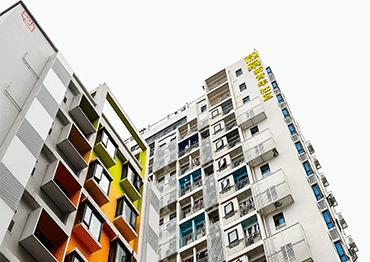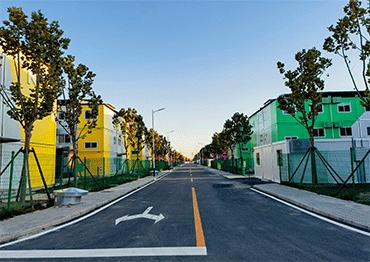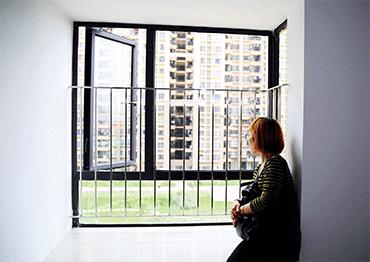Since China started commercializing the real estate sector in the 1980s, the government launched different mechanisms to provide affordable housing, including public rentals and low-rent units, and also subsidized what it termed “economical residences” for sale. But at the same time, the priorities of China’s public housing policy have swung between promoting affordable housing for rent and for purchase.
In the early stages of commercialization, when most of China’s urban residents were still living in homes allocated under the planned economy, China launched its “economical residence” scheme in the late 1990s, which aimed at enabling middle-income residents to purchase their first home.
However, as government cutbacks on allocated housing increasingly strained low-income residents, China started shifting to low-cost housing for rent. In 2003, China launched a scheme to provide low-rent apartments targeting low-income residents, and in the late 2000s, another public rental scheme targeting migrant workers was launched.
In July 2021, the State Council released a document explicitly calling for housing affordability in the rental market. In the policy document, the State Council said that the country’s affordable housing system will be mainly composed of public rental units for low-income households, affordable rental units targeting new urban residents, and young graduates and shared-ownership housing for lower-middle-income and first-time buyers.
This is why the release of Document 14, which stresses the need to increase the supply of subsidized housing for purchase, signals a major shift from existing public housing policy. This supposition saw further confirmation in November last year, when Ni Hong, minister of Housing and Urban-Rural Development, said the latest reform will focus on promoting low-cost housing for purchase to build a multi-layer system.
Different from previous public housing schemes, under the new plan, subsidized housing for purchase cannot be sold on the private market, and can only be sold back to the government.
Under China’s previous affordable housing schemes, subsidized housing stock for purchase was allowed to be traded as private property after a set number of years, which was long criticized for attracting speculators who took advantage of cheap prices to make profits later.
This arrangement served to undermine the effectiveness and efficiency of China’s public housing policy, another major reason why authorities shifted the focus of public housing policy to rentals, according to analysts.
This may also point to China leaning toward the Singapore model, where the resale of HBD apartments is separate from the commercial property market, with strict restrictions on sellers and buyers.
But according to an inside government source who spoke to NewsChina on condition of anonymity as they were not authorized to discuss the matter with media, the latest policy shift is a recalibration rather than an overhaul of existing housing policy.
For Yu Xiaofen, vice-president of the Zhejiang University of Technology and dean of the Chinese Academy of Housing and Real Estate at the university, it is unlikely that China will adopt Singapore’s housing model nationwide.
Yu said that the Singapore model primarily focuses on promoting home ownership through subsidized sales. But given the varied socio-economic conditions across China’s vast regions, the country needs a more diverse solution to address its housing problems.
“Unlike Singapore, a city-state with a population of less than six million, China’s urbanization rate is only 65 percent and it has a large migrant population of 376 million,” Yu told NewsChina.
Yu argued that given the high migrant population in Chinese cities and their relatively low income compared to other social groups, China still needs to focus on providing affordable rental housing in many regions.
As Document 14 suggests, the reform on building low-cost housing for purchase only applies to cities with a population of over three million. It is estimated that 35 cities in China fall into that category.

 Old Version
Old Version


